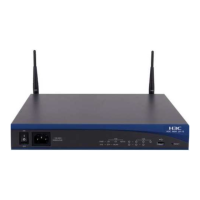– The switch with the highest priority in the backup group serves as the master switch
and undertakes the services.
– Except for the master switch, other switchs in the backup group serve as the backup
switchs and work in the Backup state.
– If the master switch fails, backup switchs select a new master switch based on their
priorities to provide routing service.
l In the load balancing mode, multiple backup groups are created to share the traffic of a
network. One switch can join different backup groups. The load balancing mode is as
follows:
– Switch A serves as the master device in backup group 1 and the backup device in backup
group 2.
– Switch B serves as the master device in backup group 2 and the backup device in backup
group 1.
– Some hosts on the network use backup group 1 as their gateway and others use backup
group 2 as their gateway.
In this case, they can back up each other and share the traffic.
NOTE
The VLANIF interface support VRRP.
Pre-configuration Tasks
Before configuring the VRRP backup group, complete the following tasks:
l Configuring network layer attributes for the interface to connect the network
Data Preparation
To configure the VRRP backup group, you need the following data.
No.
Data
1 Backup group ID
2 Virtual IP address of the backup group
3 Priorities of switchs in the VRRP backup group
6.3.2 Creating a Backup Group and Configuring a Virtual IP
Address
By creating a VRRP backup group, you can use the default gateway address on a LAN to be the
IP address of the VRRP backup group.
Context
Do as follows on each switch of a backup group:
Perform the following step as required to configure VRRP for IPv4 or VRRP for IPv6.
Quidway S6700 Series Ethernet Switches
Configuration Guide - Reliability 6 VRRP and VRRP6 Configuration
Issue 01 (2011-07-15) Huawei Proprietary and Confidential
Copyright © Huawei Technologies Co., Ltd.
218

